Medals of the US Public Health Service Commissioned Corps
Awarded for protecting the American public’s health safety
When threatened by an enemy that could impact the existence of our country, it is natural to turn to the uniformed services of the United States such as the Army, Navy, Air Forces, Marine Corps, and the Coast Guard or even the National Oceanic and Atmospheric Administration (NOAA) and the recently created Space Force for protection.
When fighting a hidden enemy such as a pandemic, virus, or major health threat, however, it is important to remember there is actually one other uniformed service of the United States to turn to: The United States Public Health Commissioned Corps.
Especially important and vital in our current health crisis, the role of the Commissioned Corps of the United States Public Health service is the protection, promotion, and advancement of health and safety to the public. The Corps consists of a 6,500-strong cadre of uniformed health officials trained in a variety of health disciplines. The operational head of the Corps is the Surgeon General of the United States. Currently, Vice Admiral Jerome Adams serves in that capacity.
ORIGINS OF US. PUBLIC HEALTH SERVICES
The roots of the U.S. Public Health Service are tied to the maritime services of the United States. As early as the first session of Congress in 1788, the Congress provided for the care of sick and disabled seamen. By July 1798, Congress passed an act providing for the Marine Hospital fund originally paid by dues from each sailor and merchant seaman.
Unfortunately, no centrally administered hospital program would begin until after the Civil War. Because of increasing complaints to the Treasury Department (which funded the hospitals), John Maynard Woodworth, a famous surgeon of the Union Army and expert on hospitals, was asked to transform the Marine Hospital Service in 1869. Two years later, his title was changed to “Supervising Surgeon General,” a position that would ultimately become the Surgeon General of the United States.
Dr. Woodworth placed all of the doctors of the Marine Hospital Service under the command of the Surgeon General. They became the nucleus of what would become the Commissioned Corps, a competent, mobile, and professional career service medical organization that could be moved to meet the needs of the service and the country.
Under Woodworth’s guidance, uniforms were designed for the cadre of physicians. These were very similar to naval uniforms. Woodworth even designed the Public Health Service Commissioned Corps emblem by combining a fouled anchor with a caduceus.
In 1889, Dr. John Hamilton succeeded Dr. Woodworth. He convinced President Grover Cleveland that the stability of the service depended on commissioned officers. In response, Cleveland enacted the Commissioned Officers of the Marine Hospital Service.
By 1912, the U.S. Public Health and Marine Service became the United States Public Health Service. The country now had a major force for combating disease in America.
EXPANDING THE US PUBLIC HEALTH SERVICE
During the twentieth century, the Public Health Service (PHS) undertook a five-fold mission: health care, biomedical research, disease control, health protection and health education. Up through 1954, the PHS also had an active role in screening twelve million people passing through Ellis Island. It screened all third-class passengers entering the United States for contagious diseases as well as mental and physical disabilities. While most passengers passed and went on their way to making new lives, some were detained at hospitals on Ellis Island. This medical screening continues today for those seeking permanent or temporary residency in the United States.
With world tensions rising in the late 1930s, the PHS emphasized military readiness. After the outbreak of WWII, the PHS addressed a shortage of nurses by creating the Cadet Nurse Corps in 1943. Under the direction of PHS’ Division of Nurse Education, the U.S. Cadet Corps graduated 124,000 nurses between 1943 and 1949.
During the WWII, many PHS officers who were attached to the Army or Navy wore the appropriate uniform of each service. The only discernible difference was that the fouled anchor and caduceus of the PHS.
The Commissioned Corps also provides the Coast Guard with all of its medical services. The senior physician holds the rank of Assistant Surgeon General.
The PHS also provides additional services including services including addressing the medically under-served populations such the American Indians and Alaska Natives in addition to federal prisons.
MEDALS OF THE PUBLIC HEALTH SERVICES
In 1958, the Commissioned Corps of the United Public Health Services established an awards program to recognize service and achievements of its members. The 1958 authorization created the Distinguished Service Medal, the Meritorious Service Medal, and the Commendation Medal.
The PHS’ Distinguished Service Medal is the highest award given for outstanding contributions to the PHS’ mission especially those resulting in major impact on the health of the nation. It may also be awarded for a one-time heroic act resulting in a great saving of life, health or property.
Following closely in precedence is the U.S Public Health Service Meritorious Service Medal It is awarded for a high level of achievement in research, program direction, or exhibition of great courage in dangerous work or in an emergency.
The final medal created by the 1958 authorization was the U.S. Public Health Commendation Medal. It is awarded to any officer who has exhibited a level of proficiency greater than normally expected such as the application of a unique skill or a creative approach to solving problems. This medal was not authorized to recognize acts of bravery or heroism.
Each of the three medals authorized in 1958 are awarded in three grades: gold, silver, and bronze, in descending order.
The 1958 law authorized two additional medals, created by using the same obverse of the design of the crossed anchor and caduceus behind a U.S. Shield with surmounted eagle and the inscription “Public Health Service United States of America.” The U.S. Public Health Service Outstanding Service Medal (OSM) was awarded to officers who demonstrated outstanding leadership at the PHS or for a single accomplishment which impacted the health of the nation. To set it apart, the OSM pendant is finished in rhodium. Early examples of these medals are engraved “Department of Health/Education and Welfare.” Issues after 1980 have blank reverses.
The other award created by the 1958 law was the USPHS’ Achievement Medal. It uses the same design as the OSM but in a copper finish. It is presented to officers of the grade of lieutenant commander and lower for above-average performance of duty and superior performance over a short period of time, such as a tour of 120 days or less.
By 1989, the Public Health Service Citation became a medal. It was awarded for noteworthy performance of duty when not warranting the Achievement Medal. The medals appear similar but vary in ribbon design and finish.
ADDITIONAL MEDALS
By 1976, the Commissioned Officers Awards Program had expanded to include eight additional medals. Currently, the program consists of eighteen individual and two unit awards.
Surgeon General Dr. C. Everett Koop, who served from 1981-1989, established the Surgeon General’s Exemplary Service Medal. The gilt obverse shows a Commissioned Officer and a PHS nurse at the bedside of a patient. The medal is awarded at the sole discretion of the Surgeon General to recognize officers for exemplary service. The reverse is identical to the other medals that the PHS authorized in the late 1980s: a fouled anchor and caduceus with the border inscription,
“U.S. Public Health Service.”
The Surgeon General’s Medallion is 60mm in diameter. It is often awarded to civilians for the highest level of contributions to the initiatives of the Office of the Surgeon General. It uses the same design at the Surgeon General’s Exemplary Service Medal.
In 1988, the National Emergency Preparedness Award was introduced due to the PHS’ increasing medical relief efforts associated with natural disasters and other public emergencies. In order for a Commissioned Corps officer to qualify for it, he or she must actively participate or serve a minimum of four continuous years in emergency preparedness activity for the PHS or other Federal agency. The medal’s six lightning bolts surrounding the PHS seal is a unique design. The reverse features a pair of five- leaf branches intertwined and the inscription, “National Emergency/Preparedness/Award.”
The awards program continued to expand in the late 1980s. These incorporated the PHS’ fouled anchor and caduceus with the “U.S. Public Health Service” border inscription on the obverse. The new awards included: Hazardous Duty Award, Foreign Duty Award, Special Assignment Award, Isolated Hardship Award, Crisis Response Service Award, and the Bicentennial Unit Commendation Award. Each medal has a unique ribbon and marked reverse.
While the name of each award clearly explains the nature of the award, specific eligibility requirements must be met for each. For example, eligibility for the Hazardous Duty Award requires 180 days of direct contact with detained aliens in an immigration and / or naturalization facility to receive. If an officer served at least 30 consecutive days outside the U.S. (such as working to mitigate the Ebola epidemic in Africa), he or she would be eligible for the Foreign Duty Award. The Crisis Response Service Award is given to officers who assisted during the 1992 Hurricane Andrew Disaster Relief or who were involved in the 2001 9/11 Disaster Response. The most recent awards have been given to a team of specialized officers of the USPHS Commissioned Corps who worked with the United States Embassy in Japan to provide compassionate access use of an investigational antiviral treatment for severely ill patients who had COVID-19.
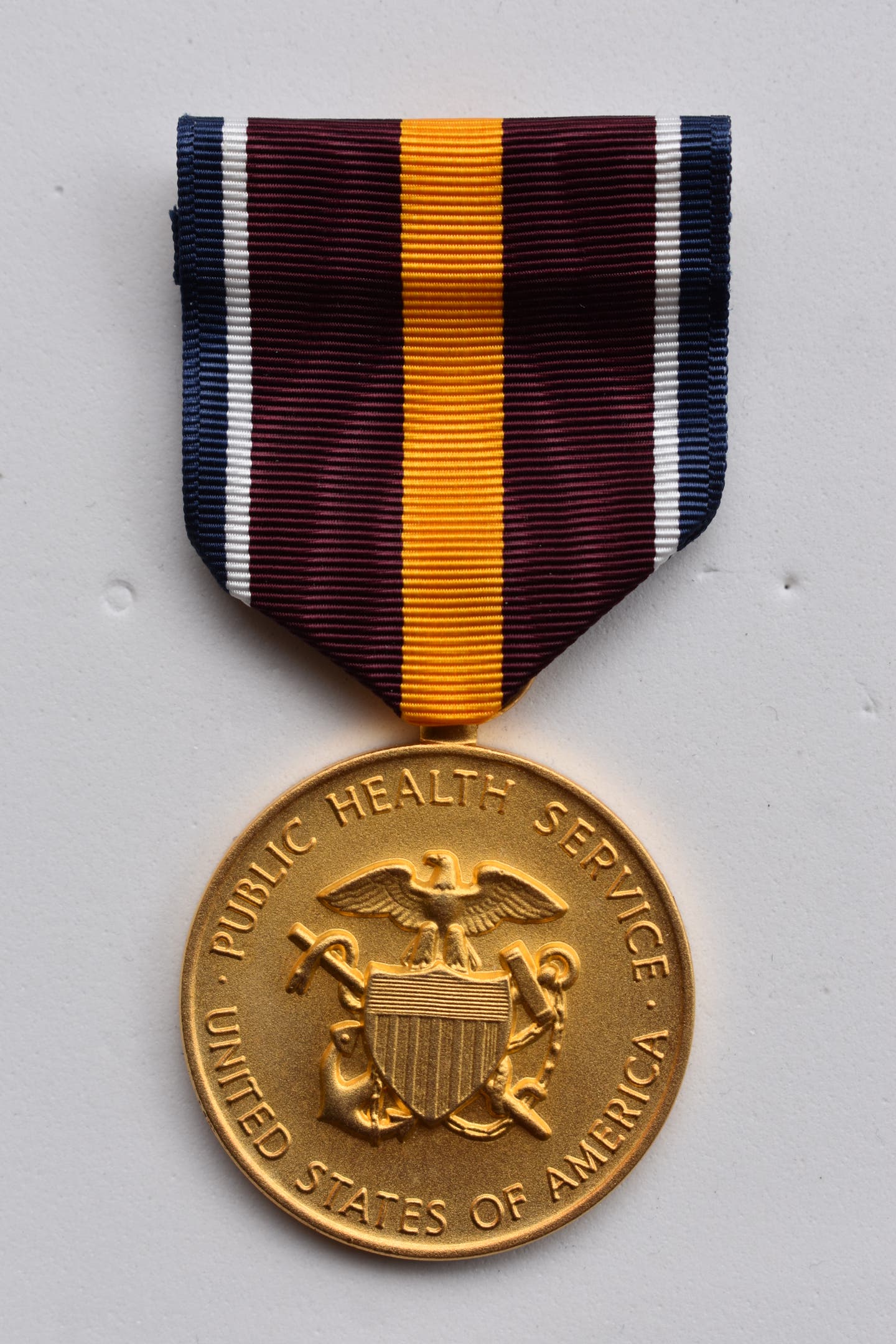
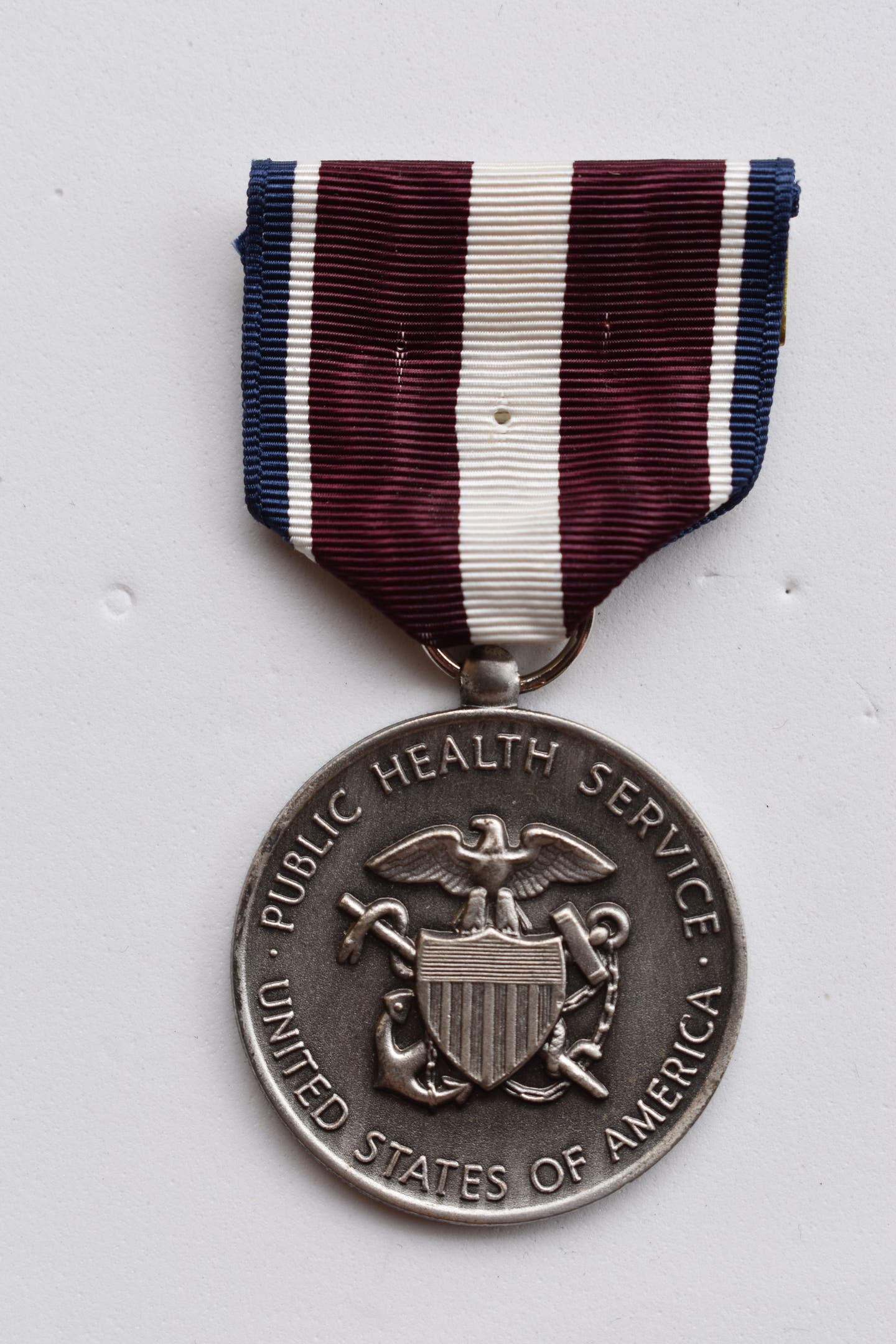
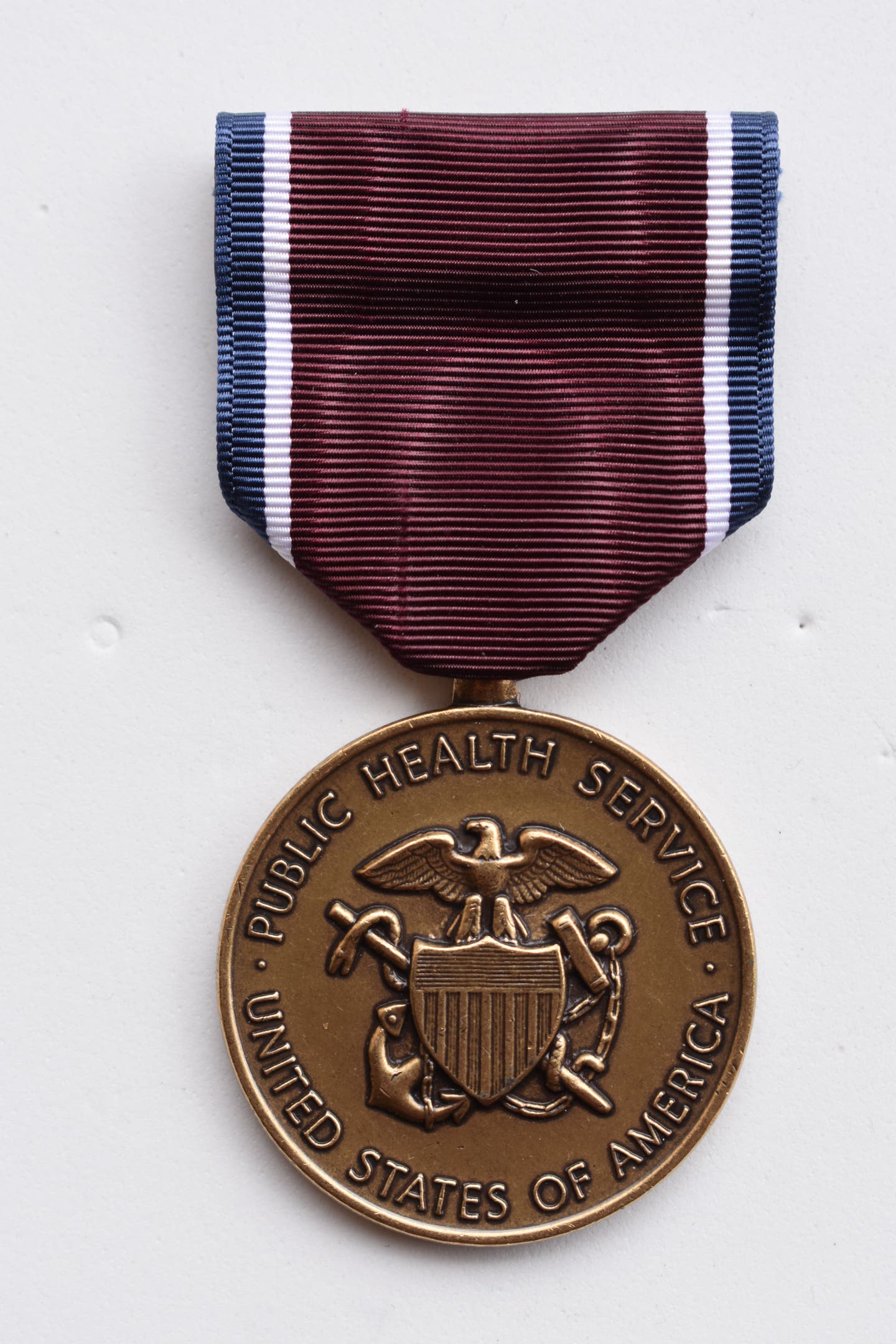
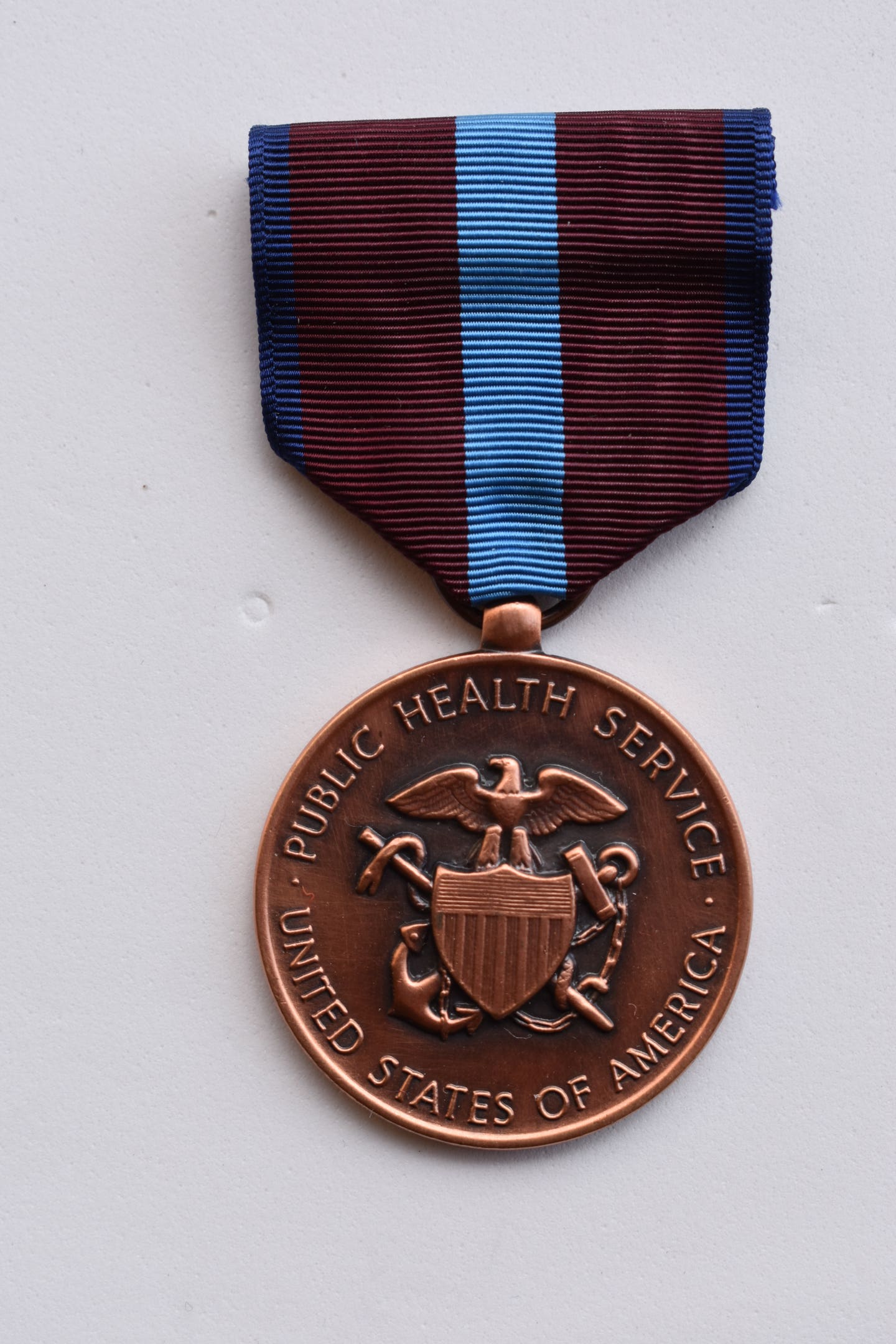
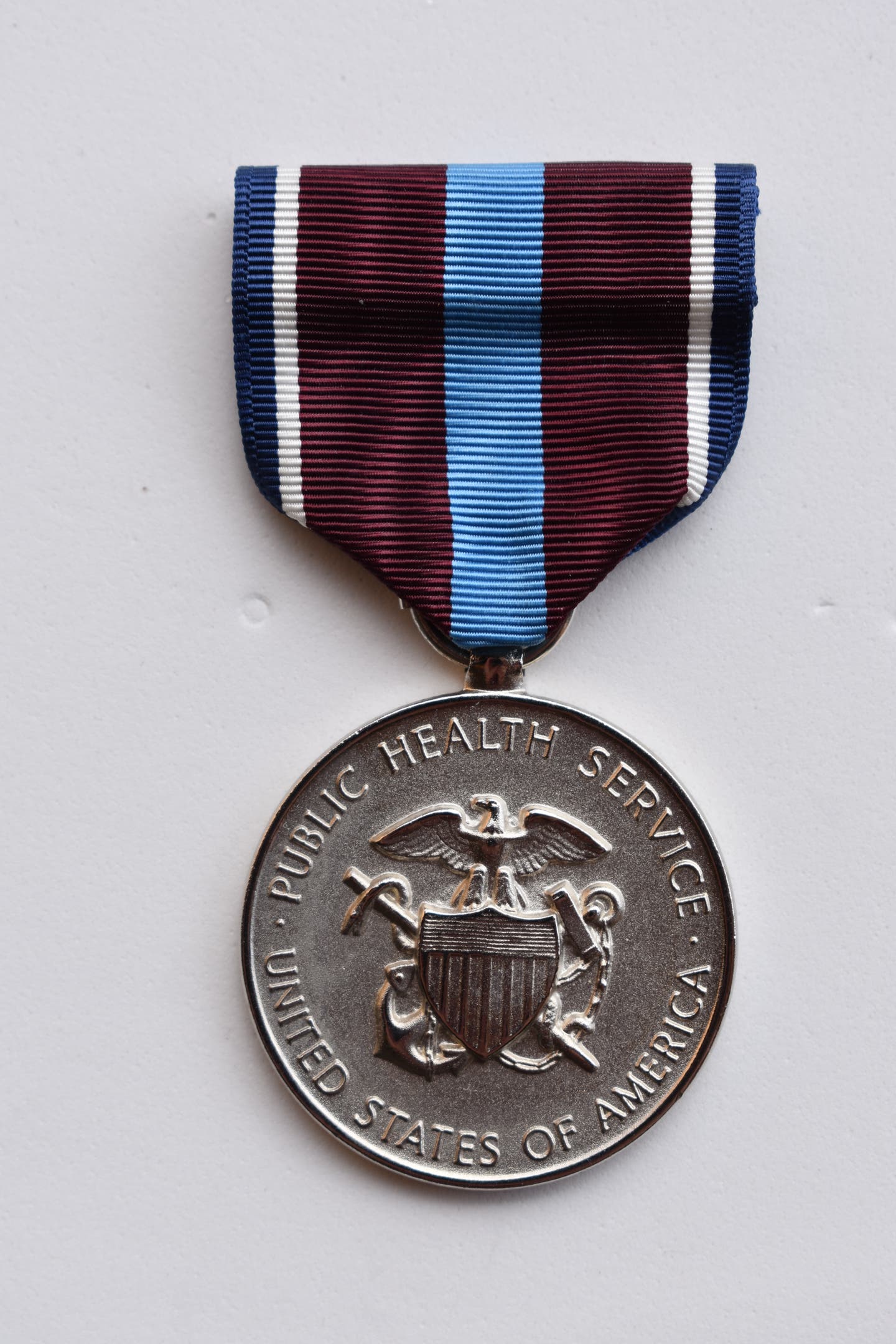
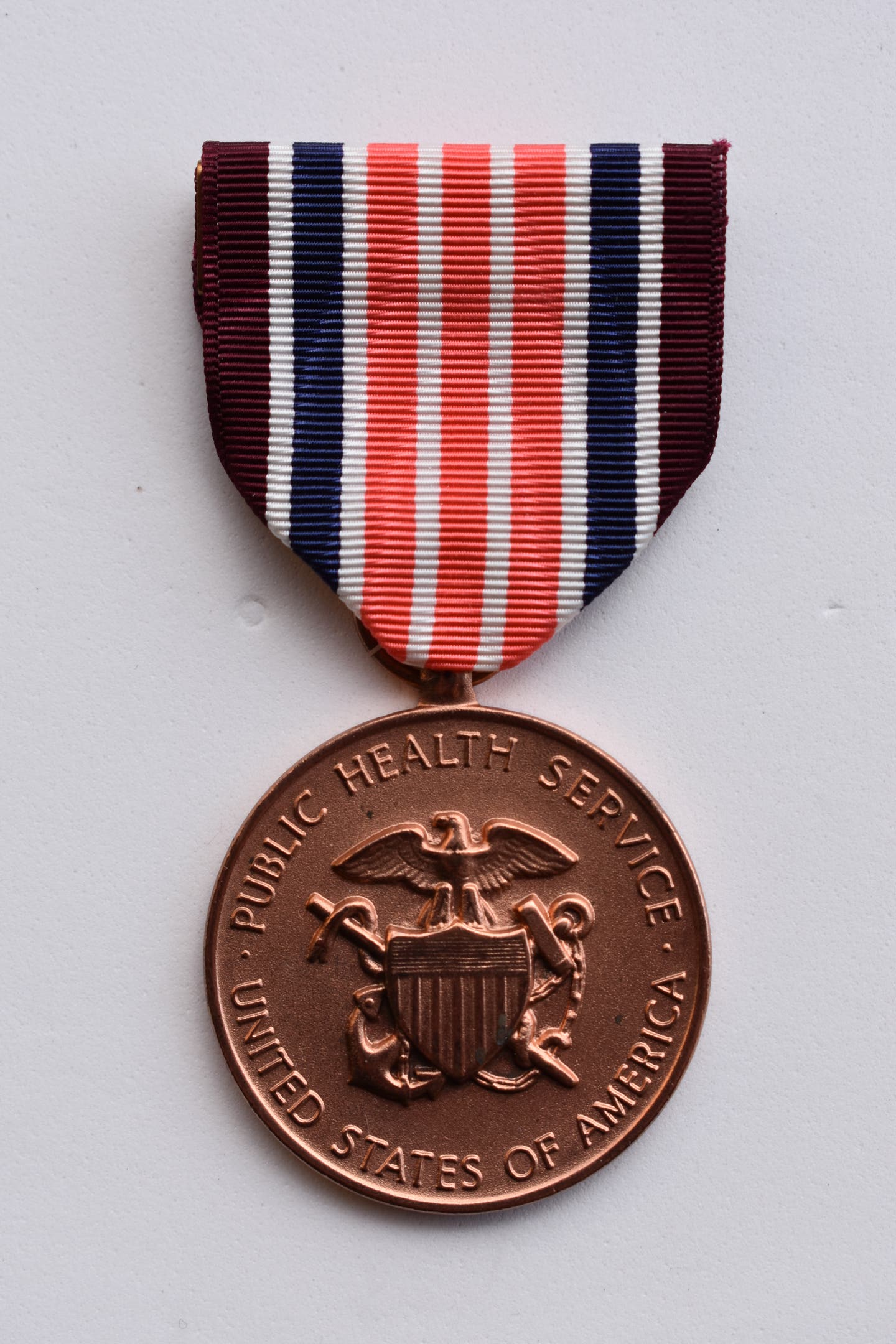
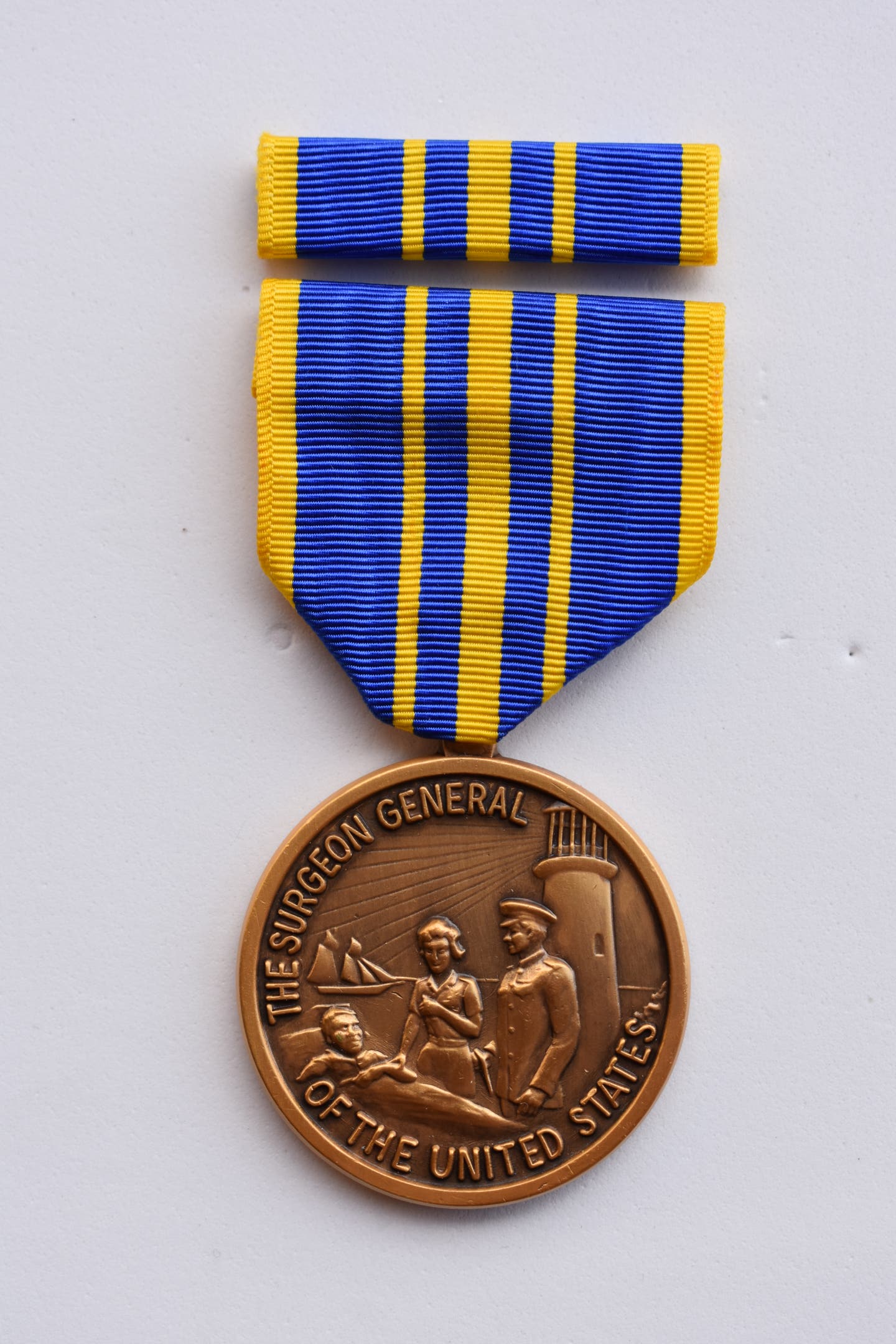
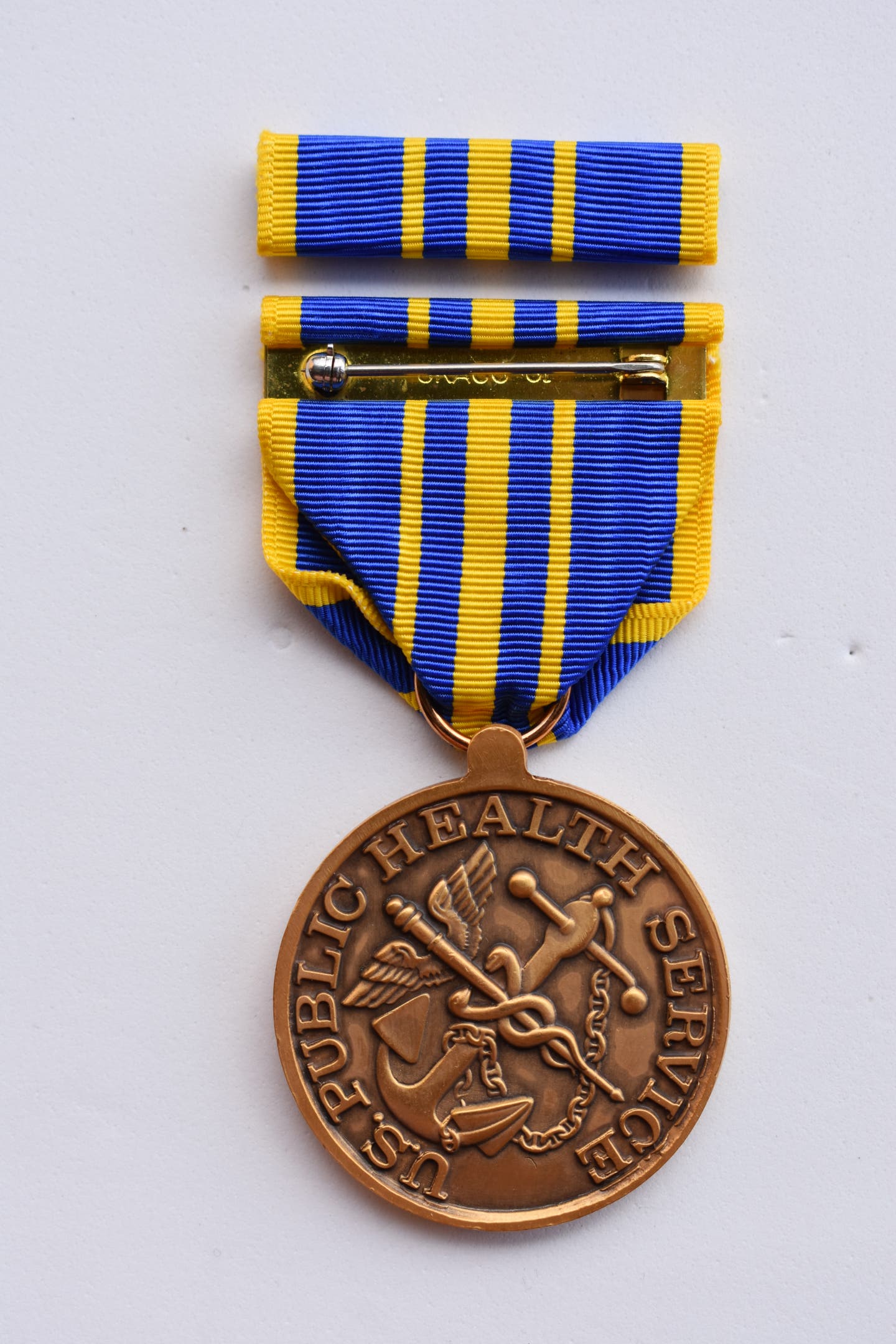
The PHS Commissioned Corps created two additional awards on August 6, 2007. The first was the Global Health Campaign Medal. The award is for any Global Health assignment outside the United States. It may be only awarded once.
The second was the Global Health Initiative Service Medal. The requirement for earning this medal is at least 30 consecutive or 60 nonconsecutive days on temporary or permanent assignment. Both of the Global Health medals recognize the worldwide demands on the Commissioned Corps’ doctors and nurses.
The US Public Health Commissioned Corps is the only uniformed service committed to protecting, promoting, and advancing the health and safety of the nation. The men and women of the Corps will be on the front lines in the current coronavirus pandemic including facilitating rapid delivery of remdesivir to the sickest of the COVID-19 infected patients, aiding the Centers for Disease Control, and assisting the U.S. Customs and Border Protection.
You may also like:
*As an Amazon Associate, Military Trader / Military Vehicles earns from qualifying purchases.
David Burrows is a retired educator and life long military collector. He started collecting as a teenager. David was a physics teacher for 37 years with the Pittsburgh Public schools. He is a frequent contributor to Military Trader as well as the OMSA Journal. His other passion with British cars has resulted in many feature stories both in US publications as well as international publications over the last 30 years.








